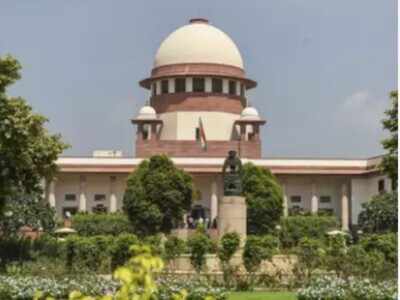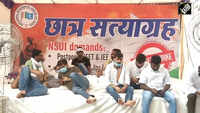
On August 27, a five-judge Constitution Bench of the Supreme Court headed by Arun Mishra said that there are unequals within SC/ST groups and that has necessitated the need for further sub- classification, which state governments are entitled to do. The bench also called for a review of a past top court ruling that SCs and STs were homogenous communities. This decision is expected to have a significant impact on reservations in jobs and colleges. TOI looks at why states have been claiming that reservation itself has led to caste inequalities.
Sub categorisation of Scheduled Castes
Some of the states have argued that the reservation policy currently in place has not been able to give representation to some of the most marginalised sections within the community. This in turn, has led to some communities within the SC list who have been grossly under-represented, despite reservation.
The state governments in turn have framed special quotas within the existing quotas to address the issue. States like Andhra Pradesh and Punjab have these quotas in place. Take for example in a state like Tamil Nadu, there is a 3% quota in place within the overall SC quota for those belonging to the Arundhatiyar caste.
So, who's on the list
The decision on who will make the cut to be on the SC or ST list is taken by the executive and then notified by the President. The list changes from state to state. There are certain states when a group comes under the SC list, but it may well be a different case in another. In 2018, a five-bench Constitution bench led by Ranjan Gogoi said that a person belonging to the Scheduled Caste or the Scheduled Tribe community in one state would not be entitled to benefits and concessions in other states where their castes or tribes are not notified.
Why is there a need for sub-categorisation?
Various states have said that within the SC community there are some who suffer more than the others, while others in the group have reaped the benefits of reservation. The states over the years have argued that classification can be done for certain reasons and it does not violate the right to equality.
In 2006, the Supreme Court in the Nagaraj case said that the creamy layer should be excluded from the SC, ST reservation list. In 2018, in the Jarnail Singh vs Lachhmi Narain Gupta case, the SC agreed with the 2006 judgement and said sub categorisation would go against the concept of equality.
The Narendra Modi govt in 2018 requested the SC to refer the issue to a seven-judge bench, which was again turned down by the apex court. The case has since been pending in the SC.
What is the 50% reservation rule
In Indra Sawhney vs Union of India, 1992, the Supreme Court said that reservation should not be increased beyond 50%. The court said, “Since this Court has consistently held that the reservation under Articles 15(4) and 16(4) should not exceed 50% and the States and the Union have by and large accepted this as correct it should be held as constitutional prohibition and any reservation beyond 50% would liable to be struck down”. The court however, did not explain why the cap should be set at 50%. It termed the 50% cap as “reasonable” and said that any reservation beyond 50% would be liable to be struck down.
How did the rule come about
In 1979, the Janata Party government constituted the Second Backward Classes Commission, known as the Mandal Commission. The commission was named after its chairman Bihar MP Bindheshwar Mandal. It was given the task to identify India’s socially or educationally backward classes.
Till then, India already had reservation for dalits and adivasis. The commission submitted its report in 1980 and called for greater reservation for Other Backward Classes. The report was put in cold storage by the then Congress government and finally implemented a decade later by the then PM VP Singh.
Why calls have been made for increasing the 50% quota cap
The Maharashtra government told the Supreme Court on August 26 that the 50% ceiling needed to be reconsidered and that the issue should not be put before a 11-judge bench. The state government said that as 70-80% of India's population belongs to backward classes, it would be unfair to deny them proportionate quota.
The state government counsel Mukul Rohtagi said that a lot of states had enacted legislation to provide quotas beyond the 50% ceiling. “The basis of the Indra Sawhney judgment has gone. Should the 50% ceiling be reconsidered is the moot question. Let this be examined by a bench of 11 judges,” he added.
Kapil Sibal, who was appearing for a pro-Maratha reservation petitioner, said that as many as 28 states have enacted legislations and granted reservations far in excess of 50% ceiling. Any decision taken by the Supreme Court on the validity of Maratha quota or EWS quota on the basis of 50% ceiling will affect all 28 states and their legislations providing reservations.
Sub categorisation of Scheduled Castes
Some of the states have argued that the reservation policy currently in place has not been able to give representation to some of the most marginalised sections within the community. This in turn, has led to some communities within the SC list who have been grossly under-represented, despite reservation.
The state governments in turn have framed special quotas within the existing quotas to address the issue. States like Andhra Pradesh and Punjab have these quotas in place. Take for example in a state like Tamil Nadu, there is a 3% quota in place within the overall SC quota for those belonging to the Arundhatiyar caste.
So, who's on the list
The decision on who will make the cut to be on the SC or ST list is taken by the executive and then notified by the President. The list changes from state to state. There are certain states when a group comes under the SC list, but it may well be a different case in another. In 2018, a five-bench Constitution bench led by Ranjan Gogoi said that a person belonging to the Scheduled Caste or the Scheduled Tribe community in one state would not be entitled to benefits and concessions in other states where their castes or tribes are not notified.
Why is there a need for sub-categorisation?
Various states have said that within the SC community there are some who suffer more than the others, while others in the group have reaped the benefits of reservation. The states over the years have argued that classification can be done for certain reasons and it does not violate the right to equality.
In 2006, the Supreme Court in the Nagaraj case said that the creamy layer should be excluded from the SC, ST reservation list. In 2018, in the Jarnail Singh vs Lachhmi Narain Gupta case, the SC agreed with the 2006 judgement and said sub categorisation would go against the concept of equality.
The Narendra Modi govt in 2018 requested the SC to refer the issue to a seven-judge bench, which was again turned down by the apex court. The case has since been pending in the SC.
What is the 50% reservation rule
In Indra Sawhney vs Union of India, 1992, the Supreme Court said that reservation should not be increased beyond 50%. The court said, “Since this Court has consistently held that the reservation under Articles 15(4) and 16(4) should not exceed 50% and the States and the Union have by and large accepted this as correct it should be held as constitutional prohibition and any reservation beyond 50% would liable to be struck down”. The court however, did not explain why the cap should be set at 50%. It termed the 50% cap as “reasonable” and said that any reservation beyond 50% would be liable to be struck down.
How did the rule come about
In 1979, the Janata Party government constituted the Second Backward Classes Commission, known as the Mandal Commission. The commission was named after its chairman Bihar MP Bindheshwar Mandal. It was given the task to identify India’s socially or educationally backward classes.
Till then, India already had reservation for dalits and adivasis. The commission submitted its report in 1980 and called for greater reservation for Other Backward Classes. The report was put in cold storage by the then Congress government and finally implemented a decade later by the then PM VP Singh.
Why calls have been made for increasing the 50% quota cap
The Maharashtra government told the Supreme Court on August 26 that the 50% ceiling needed to be reconsidered and that the issue should not be put before a 11-judge bench. The state government said that as 70-80% of India's population belongs to backward classes, it would be unfair to deny them proportionate quota.
The state government counsel Mukul Rohtagi said that a lot of states had enacted legislation to provide quotas beyond the 50% ceiling. “The basis of the Indra Sawhney judgment has gone. Should the 50% ceiling be reconsidered is the moot question. Let this be examined by a bench of 11 judges,” he added.
Kapil Sibal, who was appearing for a pro-Maratha reservation petitioner, said that as many as 28 states have enacted legislations and granted reservations far in excess of 50% ceiling. Any decision taken by the Supreme Court on the validity of Maratha quota or EWS quota on the basis of 50% ceiling will affect all 28 states and their legislations providing reservations.
Download
The Times of India News App for Latest India News

Coronavirus outbreak
Trending Topics
LATEST VIDEOS
India
 Covid-19: Recoveries in India near 26 lakhs, active cases at 22%
Covid-19: Recoveries in India near 26 lakhs, active cases at 22%  LAC row: China builds 5G infra, fresh construction at Pangong Tso
LAC row: China builds 5G infra, fresh construction at Pangong Tso  NSUI’s hunger strike enters 3rd day to postpone JEE, NEET exams
NSUI’s hunger strike enters 3rd day to postpone JEE, NEET exams  Ramdas Athawale meets Sushant’s family
Ramdas Athawale meets Sushant’s family  Just like pandemics, terrorism also affects all of humanity: S Jaishankar
Just like pandemics, terrorism also affects all of humanity: S Jaishankar  Jammu and Kashmir: Rivers swell in Udhampur due to incessant rains
Jammu and Kashmir: Rivers swell in Udhampur due to incessant rains
More from TOI
Navbharat Times
Featured Today in Travel
Quick Links
Coronavirus in MumbaiCoronavirus in KolkataCoronavirus in HyderabadCoronavirus in DelhiCoronavirus in BangaloreCoronavirus symptomsCoronavirus in IndiaWhat is CoronavirusCoronavirus NewsSolar EclipseNPRWhat is NRCCAB BillCAB and NRCRTI BillPodcast newsLok SabhaShiv SenaYSRCPCongressBJP newsUIDAIIndian ArmyISRO newsSupreme Court
Get the app



